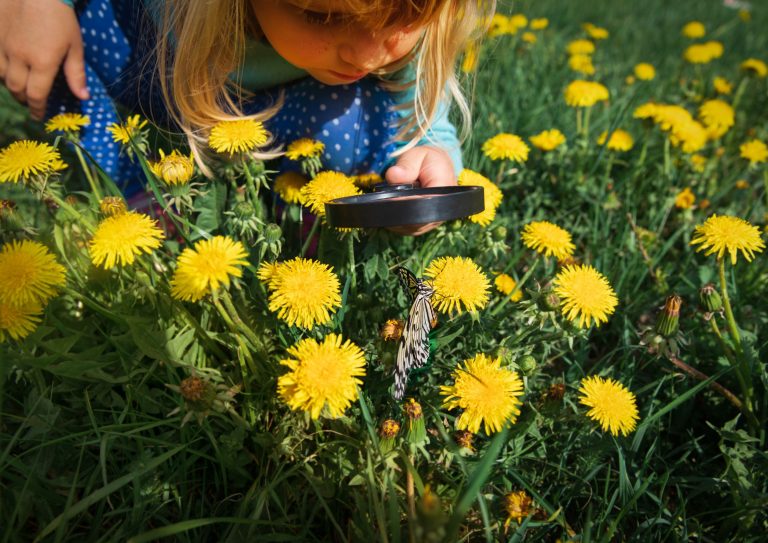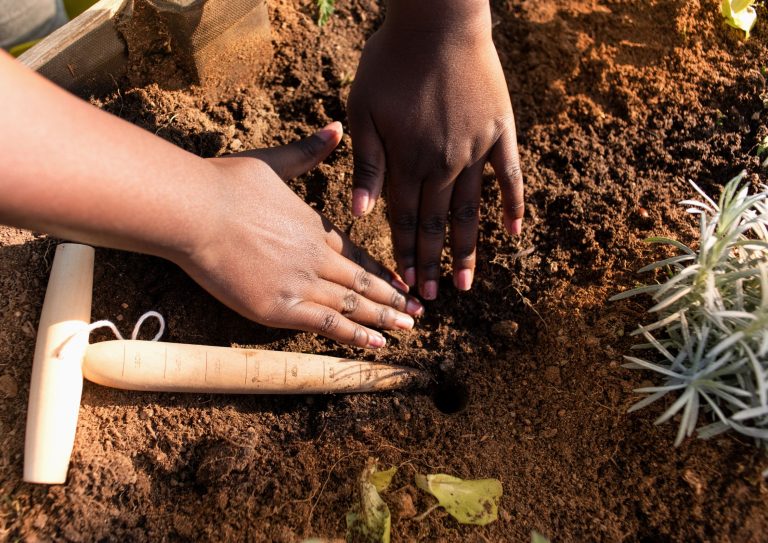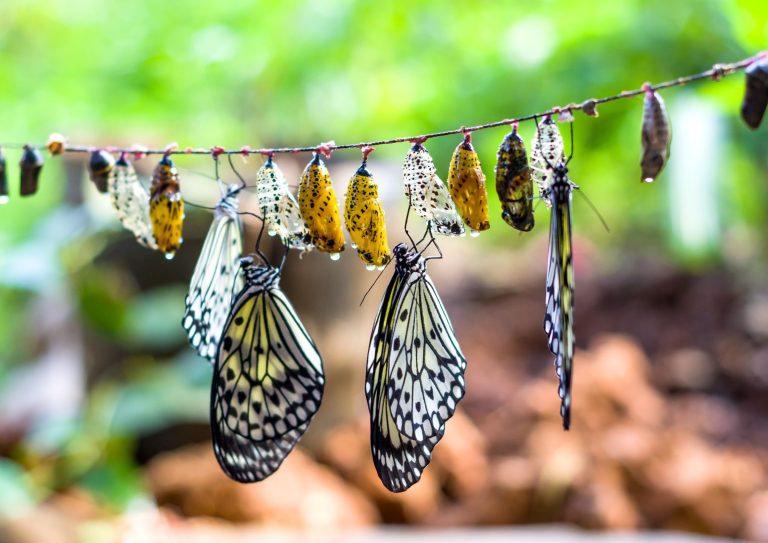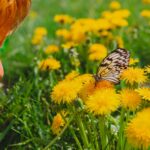A sensory butterfly garden is a nice place for rest and exploration, especially for children. Any butterfly garden for kids is best explored by using all of their senses. That is why developing a sensory butterfly garden is an excellent way to add life and color to your outdoor area.
A sensory butterfly garden is a well-planned outdoor space that stimulates our own senses. It takes a lot to create a sensory garden as it involves innovative outdoor techniques that incorporate fragrances, sounds, textures, tastes, and other elements to provide visitors with a complete sensory experience of nature.
In this article, you’ll get in-depth information on 8 sensory butterfly hacks so you can create the ultimate sensory garden space for butterflies.

The 8 Best Sensory Butterfly Garden Hacks: How to Get Started
Still unsure about how to get started with your sensory butterfly garden? Here are the best 8 hacks to start your butterfly gardening for kids.
01: Locate a Sunny Spot
First and foremost, you must select the appropriate location. Choose a sheltered area of your plot that receives plenty of sunlight. Whether you take a small piece of your garden or a large section, ensure it gets ample sunlight, ideally, at least nine hours a day.
For instance, you may ensure the garden is safe from strong winds and poor weather; this may be close to your backyard fence. By stacking old logs, you may create more shelter.
02: Take a Pragmatic Approach
Blend vegetation and wildflowers and avoid insecticides.
When constructing your butterfly garden, go for a more natural look. Have an open area with plants and flowers, as large as possible, to provide a location for butterflies to deposit their eggs.
Butterflies enjoy cuckooflower, hairy vetch, and red Gerageranium for their beautiful wildflower scent. Avoid using chemicals in butterfly gardens and, instead, go organic all the way. Pesticides can include chemicals that not only kill snails but also pollinate them.
03: Plant Purple Nectar-Offering Blooms
If you enjoy a splash of luscious purple in your gardening color palettes, you are in luck. Many of the flowers in this color attract butterflies.
The buddleja is an invaluable asset to a bright butterfly garden because of its crescent clusters of purple blooms and honeyed aroma. It is also renowned as the butterfly bush.
Plant varieties in large quantities for maximum effect, but if you have little space, consider growing them in pots as well. Group them to create a wild and passionate atmosphere.
04: Plant in a Cottage Garden Style
Roses are a treat for both humans and bees. If you like lovely cottage gardens, you will be happy to find that the necessary plants for this design also make excellent options for butterfly gardens.
Blooms and lilacs are always excellent choices for gardening and will fill any area with a pleasant aroma all through the warmer months.
Butterflies also enjoy cottage garden staples such as hyacinth and cosmos because they are easy to cultivate and produce plenty of flowers.
05: Keep Flowers Available Throughout the Season
When creating a butterfly garden, consider asters, as they give blossoms and are an excellent planting choice.
Using your sensory garden to its full potential, aim to have blooms from February to early December; this will benefit you and any visiting animals.
Aubrietia mounds and flowering fruit trees are excellent selections for spring blossoms. To have the butterflies in the garden for a whole year, look for perennials and flowers that can bloom until late fall.
06: Include Water Features
On scorching days, help butterflies by watering your garden. Water is beneficial to every wildlife zone, and flower gardens are everywhere.
Ponds may attract different wildlife to your property, including frogs and dragonflies. Butterflies, though, search for shallower regions of water. However, this might be accomplished by including water lilies in your pond. The lilies’ broad leaves will gather puddles of water and provide a sunny spot for lounging.
Further, covering tin gardens with moist sand or gravel and water is a method you can try to avoid insects when the humidity is high and dry.
07: Incorporate Flat Stones for Sunbathing
Large, flat boulders are ideal for sunbathing.
Butterflies, as you can see, adore the sun. Arrange a few plain pebbles in your butterfly garden to provide them with a spot to sit and warm their wings. Place rocks along the crest of a small garden wall, or stack a couple near your flowers.
08: Become Familiar with Your Local Butterflies
Usually, it is an excellent idea to research the local species when creating a butterfly garden. Thus, spend some time researching what species are native to your area so you can consider them once you establish your own sensory butterfly garden.
Different plants attract different butterflies, influencing where they deposit their eggs. Knowing the native plants in your area can help you choose the best plants for your allotment.
Plants that attract butterflies are larval food plants because they offer nourishment to the caterpillars after the eggs hatch.


Why Is a Butterfly Garden Necessary?
Butterflies have existed for a long time. However, butterfly populations are declining in several places. Unfortunately, a few species have become extinct due to the widespread destruction of natural ecosystems. Creating a garden provides a secure haven for butterflies to nest, find shelter, and feed, compensating for the loss of their native habitat.
As some butterfly varieties are now extinct, learning how to create a butterfly garden is essential for ecological reasons, among others. Here are a few more reasons why getting started with a butterfly garden is necessary:
- Environmental significance.
Butterflies, however small they may be, play a vital role in the food chain and are markers of healthy ecosystems.
- For educational purposes.
Schools educate us about the life cycle of butterflies, but to see their process of transformation live is still intriguing to people of all ages. Moreover, they are purely lovely to look at. Observing them bloom is a calming, pleasant experience that does wonders for our well-being.
When Do Butterflies Hatch?
Butterflies prefer nectar-producing flowers, so consider this when building a butterfly garden.
Butterflies breed around March because this is the period when the environment warms up. This is essentially true for animals hibernating throughout the winter, like peacocks. As the season progresses, even more butterflies will emerge. Summertime is always the optimum butterfly season.
As a result, while studying how to develop a sensory butterfly garden, it is an excellent idea to include plants that blossom throughout the butterfly season.
Butterfly Gardening for Kids
A children’s butterfly garden is an excellent way to keep your kids occupied and learning for hours. Ideally, your garden has themed materials and accessories to encourage your kids’ infinite invention and role-playing, motor skill growth, cognition abilities, and other benefits.
When establishing your own sensory butterfly garden, include colored pasta, thematic toys, decorations, and fine motor tools like a magnifying glass, as it is a terrific way to get a close-up look at the tiny creatures in the sensory bin! Your youngster will have a blast sifting through those colored pastas to uncover all of the hidden bugs, insects, roses, sparkles, and other fun things! You may try using the multicolored bowtie pasta which resembles butterflies, while the basic cone pasta looks like caterpillars!
If you’re still seeking ideas to create the ideal hideaway for your kids’ five senses, get more sensory garden ideas here.


Bottom Line
Developing a sensory garden is a sure fun project that will offer your family not just hours of outdoor entertainment, but also, relaxation and sense stimulation for the kids.
If you’re not sure what factors to consider beforehand, we hope this article has helped you get enough insights! You may always go back to our best 8 sensory butterfly garden hacks to help you get started with your own butterfly garden for kids.
Related Posts
-
Why Your Sensory Butterfly Garden Is Missing the Mark (And How You Can Fix It)
Keeping your sensory butterfly garden appealing and engaging with the basic sensations as it should,…
-
How to Create a Children's Sensory Garden
Gardens are, by their very nature, a wonderfully sensory experience. Even the simplest…
-
How to Get Started with an Outdoor Sensory Garden
An outdoor sensory garden helps in engaging and stimulating the five basic senses of taste,…



